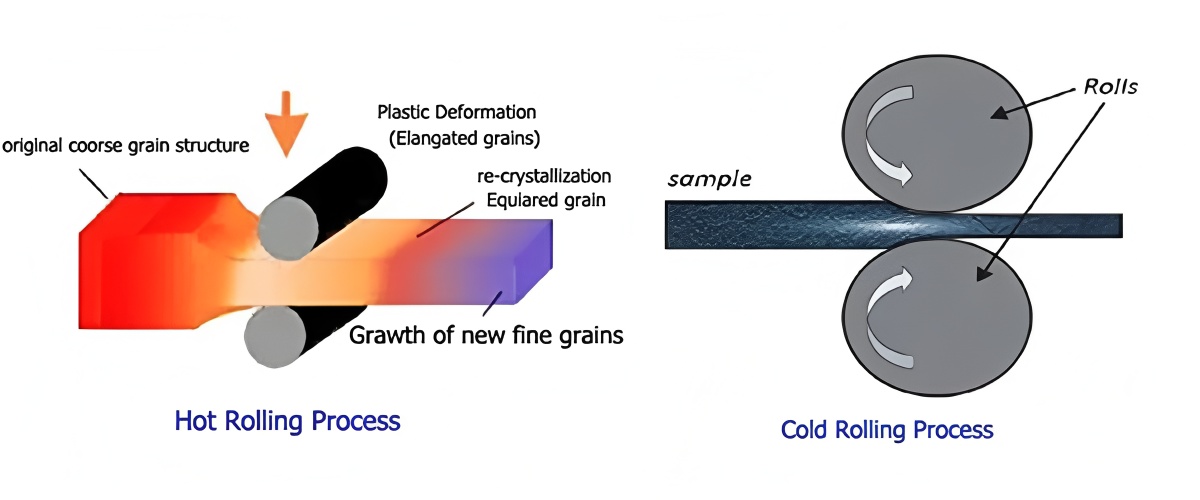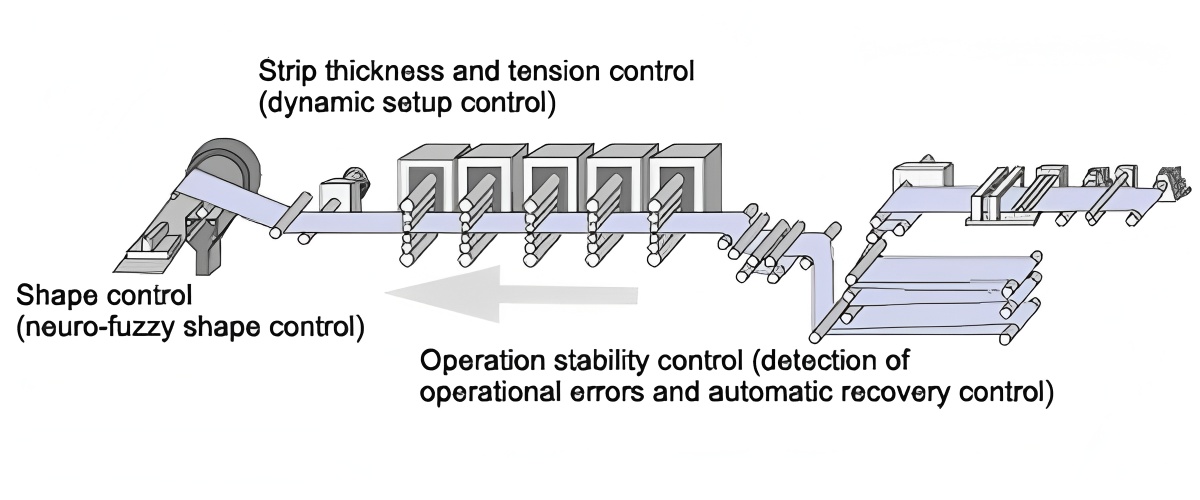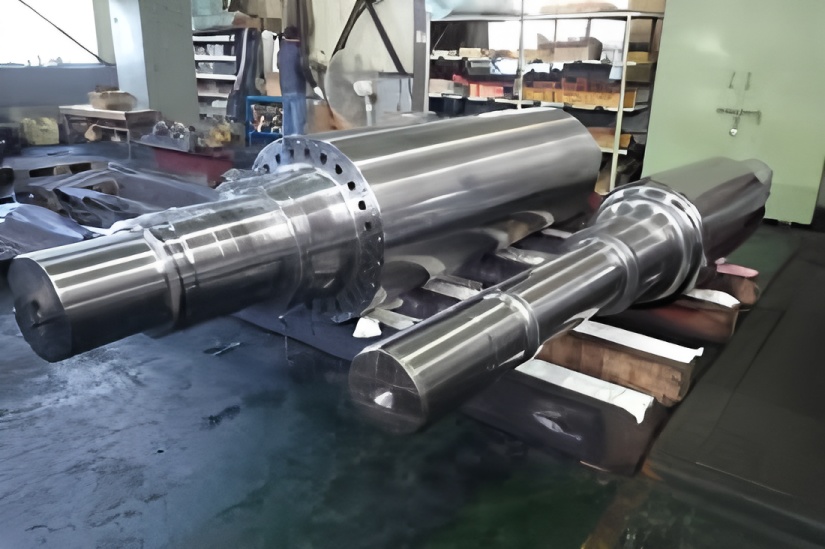Description:The work roll is a critical component of the rolling mill roll assembly. As it is primarily exposed to high temperatures during operation, it must possess excellent heat resistance, wear resistance, and high hardness.
Keyword:work rolls,chilled rolls,rolling mill rolls
Cold Rolling Work Rolls: Key Performance Characteristics and Material Selection Guide

What is a Work Roll?
The work roll is an integral part of the rolling mill roll setup. Subjected mainly to high temperatures during rolling operations, it requires outstanding heat resistance, wear resistance, and high hardness.
What Are the Material Requirements for Cold-Rolled Work Rolls? How Is Their Heat Treatment Conducted?
Materials for cold-rolled work rolls must exhibit high and uniform hardness, along with excellent wear and crack resistance. Hence, their surface hardness must comply with strict standards.
Heat treatment of work rolls primarily involves quenching, generally through two methods: induction surface hardening and overall quenching.
Development Trends of Cold Rolled Work Rolls:
Cold-rolled sheets (including galvanized, tinned, coated, and enameled steel sheets) are widely used across industries such as chemical, light industry, automotive, machinery, construction, hydropower, petroleum, coal, and railways. Rolls are essential and vital equipment components in cold-rolled sheet production. The growing demand for cold-rolled sheets has significantly increased the number of roll manufacturers. With continuous advancements in the numerical control, modernization, automation, and continuity of rolling mills, higher standards are being set for roll quality.
Key Performance Requirements for Cold Rolled Work Roll Products:
Work Roll Strength
Deformation resistance during cold rolling is considerably higher than during hot rolling. At the initial bite stage, the surface of the cold-rolled work roll not only endures pressures exceeding 1×10⁴ MPa but also withstands shear stress caused by friction between the roll and the sheet. To meet these harsh operational demands, the tensile strength σb of cold-rolled work rolls must be around 2×10³ MPa, with a uniform internal structure. Technologies such as vacuum smelting, vacuum degassing, and vacuum pouring help prevent oxide formation, improve alloy element segregation control through regulated pouring temperature and speed, and enhance structural compactness and compositional uniformity. Electroslag remelting has elevated steel purity to new levels. The addition of alloying elements like molybdenum and vanadium boosts the strength of cold-rolled roll steel and improves its overall material properties.
Work Roll Wear Resistance
Cold roll wear during cold rolling manifests mainly in two forms: macroscopic radial wear and reduced surface roughness. Macroscopic wear determines the service life of the cold roll. As billets transition from ingots to slabs—especially during high-speed rolling of various thin plates—severe wear drastically shortens the service life of cold work rolls, posing a significant challenge. The wear issue in cold-rolled work rolls has been extensively studied: for instance, wear caused by aluminum oxides in cold-rolled steel; fine abrasive particles formed from oxidized wear debris directly contributing to roll wear; immediate oxide formation on the roll surface in hot zones leading to oxidation-induced wear; and gradually increasing surface roughness during high-speed rolling. Therefore, the ability to regenerate the roll surface is crucial for extending the service life of cold-rolled work rolls.
To enhance the wear resistance of cold rolls, the following measures are recommended:
(1) Increase chromium content to extend the service life of cold rolls;
(2) Apply surface treatment technologies to improve rolling service life;
(3) Utilize high-speed steel cold rolls;
(4) Incorporate Ti to enhance wear resistance;
(5) Adopt metal spray molding technology to improve wear resistance.
Work Roll Anti-Accident Performance
Anti-accident performance refers to the resistance of cold rolls to thermal cracking, stripping, and thermal shock during use. As modern rolling mills evolve toward higher speeds and pressures, incidents such as cobbles, overlapping, and slipping during cold rolling intensify friction on the roll surface, causing instantaneous temperature spikes. Temperatures as high as 1000°C can lead to steel sticking. Typically, local surface overheating alters the microstructure and properties, with cracks mainly resulting from combined thermal and structural stresses. Cracks formed during rolling must be thoroughly removed by grinding promptly; otherwise, they may propagate into large spalling, causing premature failure. This type of microcrack-induced spalling is a primary cause of early service failure in cold-rolled work rolls.
Work Roll Hardened Layer Depth
Increasing the depth of the hardened layer effectively enlarges the functional roll diameter and extends service life, while reducing the need for re-quenching lowers overall operating costs. When the chromium content in cold roll steel increases from 2% to 3%, the hardened layer depth expands from 10 mm to 15 mm. Adding nickel to traditional chromium-based forged steel cold-rolled work rolls can further increase hardness and deepen the hardened layer by 7–8 mm. By the mid-1980s, liquid nitrogen cryogenic treatment and dual-frequency induction heating technologies became widespread, and raising the chromium content to 5% allowed the hardened layer to exceed 50 mm, with initial surface hardness values reaching up to 100 HSD.
Materials for Cold Rolled Work Rolls

High Chromium Cold Roll
Increasing the chromium content improves the hardenability of cold-rolled work roll materials. Mitsubishi Steel developed a new high-chromium forged steel cold roll material. Tests show that a Cr content of 10% results in twice the wear resistance of a 3% Cr cold roll. Further increasing Cr to 18% enhances wear resistance accordingly. Balancing carbon and chromium not only achieves higher hardness at lower quenching temperatures but also reduces fracture sensitivity and minimizes roll breakage accidents. These rolls exhibit strong breakage resistance and good roughness retention, suitable for harsh conditions such as high rolling forces and high product precision.
High-Alloy Improved Cold Roll
To enhance the mechanical properties and performance of new cold-rolled work rolls, improvements have been made to 5% Cr cold-rolled work roll materials by adjusting elements like Mo and V, or adding strong carbide-forming elements such as Ti and Nb. This development led to a new Cr5 series roll material with significantly improved wear resistance and thermal shock strength.
Nitrogen enhances the mechanical properties of rolls. It has a strong affinity with alloying elements like chromium, vanadium, titanium, and niobium, forming stable nitrides that exist in various forms within the steel. These nitrides form fine, dispersed secondary phases that inhibit austenite grain growth, refine grains, and improve strength and hardness. Controlling nitrogen content in cold-rolled roll materials can enhance overall performance, providing an important direction for future material development.
Forged Semi-High-Speed Steel Cold Rolls
During actual use, incidents such as cobbles, steel sticking, and strip breaks can alter the local structure and hardness of Cr3 and Cr5 series cold-rolled work rolls, leading to microcracks or spalling on the roll surface and reducing accident resistance. Forged semi-high-speed steel cold roll material, developed from the 5% Cr cold-rolled work roll base, incorporates high amounts of strong carbide-forming elements like Cr, Mo, and V. The resulting carbides are mainly M7C3 (HV2500) and MC (HV3000) types, whose high hardness ensures excellent wear resistance and high accident tolerance.
High-Speed Steel Cold Rolls
High-speed steel rolls were first applied practically in Japan in 1988, followed by the United States in the early 1990s. Although Europe started later, adoption progressed rapidly. Currently, large-scale manufacturing of high-speed steel rolls in China is still nascent, with key technologies yet to be fully mastered. They are only used in a few major steel enterprises, such as Baosteel. Research on manufacturing and application technologies for high-speed steel rolls is essential to broader adoption and holds significant practical value.
Today, high-speed steel cold rolls are used by dozens of steel companies worldwide, including Inland Steel (USA), Dofasco (Canada), Akers (Sweden), and Nippon Steel (Japan), with positive results. Akers uses electroslag remelting and traditional forging, while Nippon Steel employs the CPC method. High-speed steel roll materials contain abundant carbide-forming elements, mainly forming MC and M2C carbides, greatly enhancing strength, surface roughness, and wear resistance. Their use significantly reduces roll consumption, change frequency, and rolling costs, while improving sheet quality. However, due to high carbon and alloy content, production processes are complex. Reliable smelting, forging, and heat treatment methods are still under development, resulting in poor processability and low yield—key challenges for future research.


